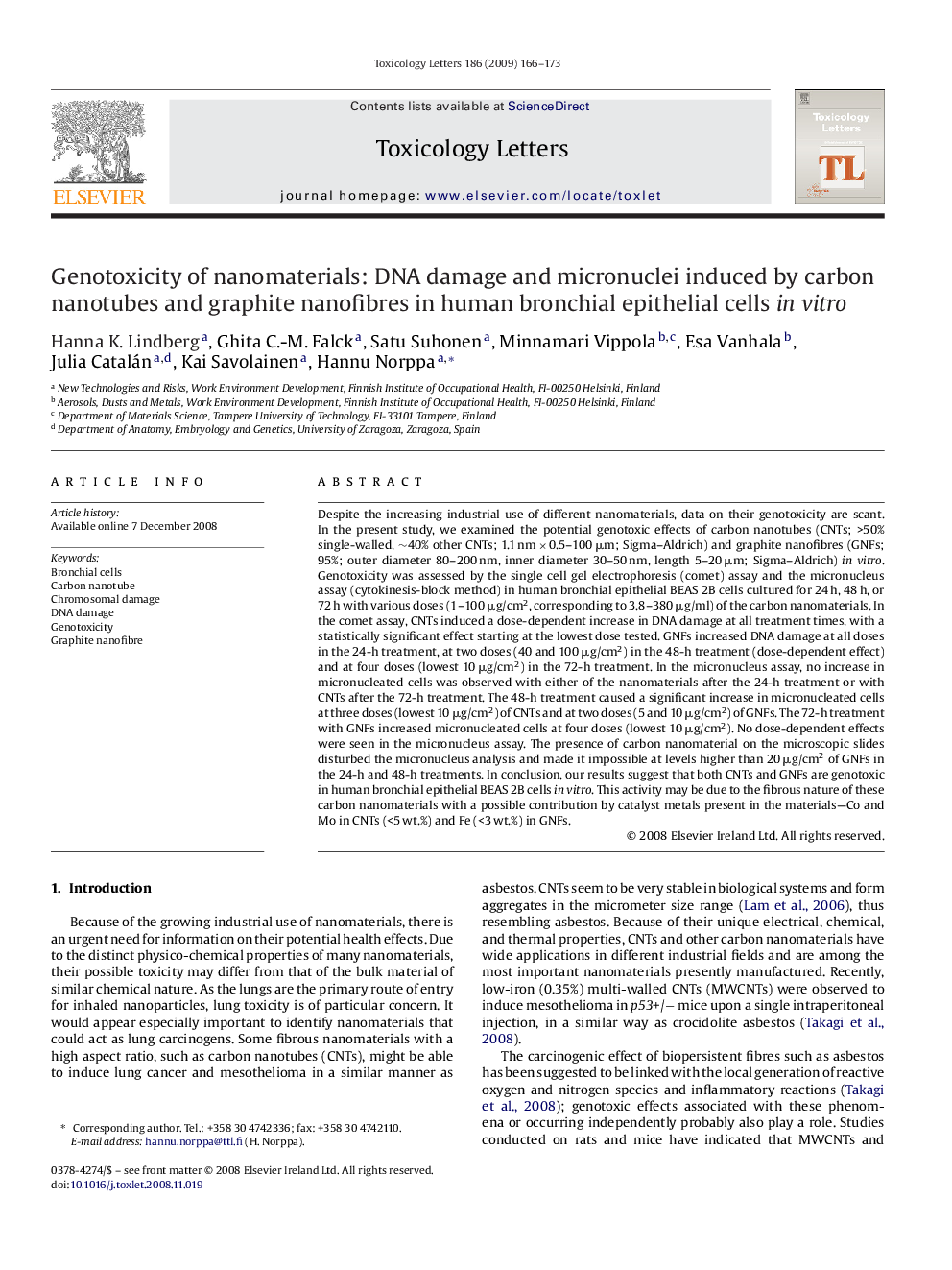| کد مقاله | کد نشریه | سال انتشار | مقاله انگلیسی | نسخه تمام متن |
|---|---|---|---|---|
| 2601291 | 1133312 | 2009 | 8 صفحه PDF | دانلود رایگان |

Despite the increasing industrial use of different nanomaterials, data on their genotoxicity are scant. In the present study, we examined the potential genotoxic effects of carbon nanotubes (CNTs; >50% single-walled, ∼40% other CNTs; 1.1 nm × 0.5–100 μm; Sigma–Aldrich) and graphite nanofibres (GNFs; 95%; outer diameter 80–200 nm, inner diameter 30–50 nm, length 5–20 μm; Sigma–Aldrich) in vitro. Genotoxicity was assessed by the single cell gel electrophoresis (comet) assay and the micronucleus assay (cytokinesis-block method) in human bronchial epithelial BEAS 2B cells cultured for 24 h, 48 h, or 72 h with various doses (1–100 μg/cm2, corresponding to 3.8–380 μg/ml) of the carbon nanomaterials. In the comet assay, CNTs induced a dose-dependent increase in DNA damage at all treatment times, with a statistically significant effect starting at the lowest dose tested. GNFs increased DNA damage at all doses in the 24-h treatment, at two doses (40 and 100 μg/cm2) in the 48-h treatment (dose-dependent effect) and at four doses (lowest 10 μg/cm2) in the 72-h treatment. In the micronucleus assay, no increase in micronucleated cells was observed with either of the nanomaterials after the 24-h treatment or with CNTs after the 72-h treatment. The 48-h treatment caused a significant increase in micronucleated cells at three doses (lowest 10 μg/cm2) of CNTs and at two doses (5 and 10 μg/cm2) of GNFs. The 72-h treatment with GNFs increased micronucleated cells at four doses (lowest 10 μg/cm2). No dose-dependent effects were seen in the micronucleus assay. The presence of carbon nanomaterial on the microscopic slides disturbed the micronucleus analysis and made it impossible at levels higher than 20 μg/cm2 of GNFs in the 24-h and 48-h treatments. In conclusion, our results suggest that both CNTs and GNFs are genotoxic in human bronchial epithelial BEAS 2B cells in vitro. This activity may be due to the fibrous nature of these carbon nanomaterials with a possible contribution by catalyst metals present in the materials—Co and Mo in CNTs (<5 wt.%) and Fe (<3 wt.%) in GNFs.
Journal: Toxicology Letters - Volume 186, Issue 3, 8 May 2009, Pages 166–173